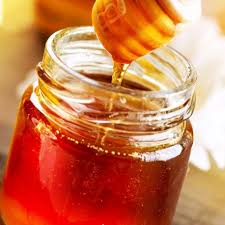Blog Post
Miel de Romarin
Posted on Mars 19, 2025
by Ghazi

Rosemary is a shrub that grows wild around the Mediterranean basin, in sunny, arid, and rocky terrain. Its blue flowers always attract bees, which transform the nectar into a highly prized honey. Rosemary honey, also known as Narbonne honey, has long been renowned. Rosemary, highly sought after in the perfume industry for its intense and strong aromas, offers a prolific, rich, and very fragrant nectar.
Rosemary honey is the first monofloral honey harvested in spring, between April and May. Its flowering is early, beginning in January or February.
Rosemary grows all over the world, particularly in Spain, Portugal, Italy, Tunisia, and Morocco.
Subtly scented with aromatic aromas, Rosemary honey is an invitation to travel to regions where cicadas sing and the southern sun shines. Rosemary flowers, rich in nectar, release powerful, sunny scents.
Rosemary honey stands out from other honeys due to its texture. It can be particularly creamy and therefore very pleasant on the palate. Its color is often very light, pale yellow, almost white. Its aroma is typical, delicate and light.
delicate test :
Rosemary honey has a very aromatic, delicate, and sweet taste. These qualities make rosemary honey a popular ingredient in sweet and savory dishes. It is also often used to add a touch of subtle flavor to a cheese platter. There are many honey recipes in which rosemary honey works wonders.
Benefits of rosemary honey:
In addition to being a food highly appreciated for its taste, rosemary honey provides quality nutritional benefits:
- It facilitates intestinal digestion: it acts positively on the stomach and stimulates intestinal function, thus allowing better digestion.
- It is an excellent stimulant recommended for stressed or tired people.
Honey has always been prized for its medicinal properties. It is a natural antiseptic, an effective pain reliever, an anti-inflammatory, and an antispasmodic.
- Rich in trace elements such as iron, calcium, copper, and boron, rosemary honey stimulates the liver by increasing the secretion and evacuation of bile. This property is essentially unique to rosemary honey. It is recommended for combating anemia and asthenia because it is rich in vitamins and minerals.
- Finally, studies show that it is also effective in treating asthma, eczema and ulcers.
Keeps very well at room temperature. Its slow crystallization often requires several months.

